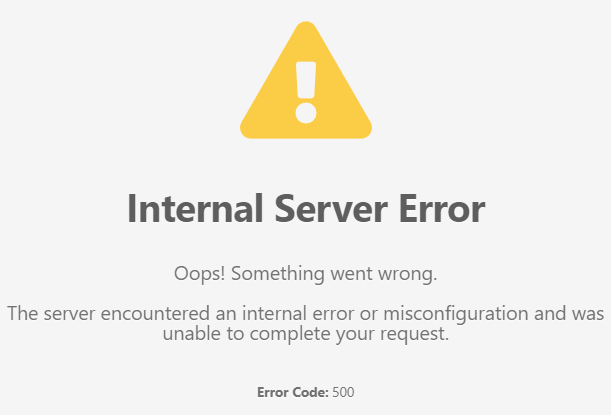in use Elementor When building a page, many people encounter a problem: fonts are clearly set up, the editor is all right, but once in the foreground is all messed up. Some become the default font, some simply have no effect. This situation is mostly related to the theme style, caching or loading priority. In this case, you can directly use the CSS Manually control the font style and get rid of the font problem for good in the most direct and effective way.

1. Why does the font not work after setting?
In WordPress, font styles can come from multiple places:
- Stylesheet for the current theme (e.g. Hello, Astra, Blocksy, etc.)
- Elementor'sglobal fontset up
- Font settings for individual modules
- External styles injected by the plugin
These styles may override each other, and once one of the rules sets the !important or loaded in a later order, it could put you in the Elementor The font you set in the "Press" box is "pressed" into it.
So, if you want the font style to display consistently, the most straightforward way is to manually write the CSSand make sure it'sprioritizationHigh enough.
2. See who is covering the current font
Open the front page of your website, right-click on the text → select "Inspect Element" (Chrome)
To view the corresponding text tags in Developer Tools (F12), look at the right-hand side of the CSS panel for the font-family is from which style file, is the Elementor s, or the theme's. If Elementor's is crossed out and the theme's font has the !important flag, that means it's a topic forcing an override.
At such times, the most appropriate thing to do is to write a paragraph of your own CSSI'm going to "grab" the font back.
3. Where do I add CSS?
There are three recommended places to add custom CSS:
Method 1: WordPress Backend → Appearance → Customize → Append CSS
Suitable for site-wide generic style modifications that do not rely on Elementor.
![Image [2]-Elementor Styles lost after font setting? The right way to add CSS manually](http://gqxi.cn/wp-content/uploads/2025/05/20250521103734934-image.png)
![Image [3]-Elementor Styles lost after font setting? The right way to add CSS manually](http://gqxi.cn/wp-content/uploads/2025/05/20250521103604910-image.png)
Method 2: Elementor editor → left settings menu → Customize CSS
Ideal for adjusting styles only for the current page or a module.
![Image [4]-Elementor Styles lost after font setting? The right way to add CSS manually](http://gqxi.cn/wp-content/uploads/2025/05/20250521104708555-image.png)
Method 3: Setting CSS class names for specific modules
in moduleAdvanced SettingsAdd a class name to it, and then control that class precisely in CSS.
![Image [5]-Elementor Styles lost after font setting? The right way to add CSS manually](http://gqxi.cn/wp-content/uploads/2025/05/20250521155457748-image.png)
4. CSS Example: Stabilizing Fonts
Assuming that you want to use the "PingFang SC" font for all paragraph text, you can add the following style:
p {
font-family: 'PingFang SC', 'Microsoft YaHei', sans-serif !important;
font-size: 16px;
font-weight: 400; }
}
This writeup in the !important is key, it will force overriding font styles from other sources. You can also use IDs or class names to increase the weight:
.elementor-widget-text-editor p {
font-family: 'Roboto', sans-serif !important;
}
If you have multiple modules that use the same font, it might be a good idea to unify them into one class name, such as .site-font-defaultand then unified management.
.site-font-default {
font-family: 'Open Sans', sans-serif !important; font-size: 15px; font-family: 'Open Sans', sans-serif !
font-size: 15px;
}
Add the class name to the "Advanced" options of the module. site-font-defaultThe
![Image [6]-Elementor Styles lost after font setting? The right way to add CSS manually](http://gqxi.cn/wp-content/uploads/2025/05/20250521155613727-image.png)
5. Avoiding common mistakes
- Font misspellings: always make sure that the font name is spelled correctly and that the case is consistent.
- Missing font references: if usingCustom FontsRemember to pass it through Elementor or a plugin first!Upload Fonts, otherwise the browser will display the default if it can't find the font.
![Image [7]-Elementor Styles lost after font setting? The right way to add CSS manually](http://gqxi.cn/wp-content/uploads/2025/05/20250521112438821-image.png)
- Cache not refreshed: Remember to clear Elementor's cache after changing the style and refresh the page to see the effect.
- Font loading order problem: If it is an external font such as Google Fonts, make sure the font resource is loaded in the page header, otherwise it may flicker or fail.
6. Tips to improve loading efficiency
When setting fonts manually, try to:
- Load only the weights you need, e.g. only Regular and Bold, not all of them.
- Use system fonts as an alternative, for example
font-family: 'Roboto', Arial, sans-serif; - Place font resources locally or use a stabilized CDNAvoid loading failures
summarize
When Elementor font settings are missing, there is a high probability that other styles are "stealing the show". Instead of iterative modifications, you can use CSS Take control yourself. As long as you find the right target element with the right style and weight, the font display problem can basically be solved. Once the adjustment is in place, the subsequent need not bother to tinker.
Recent Updates
Link to this article:http://gqxi.cn/en/55474The article is copyrighted and must be reproduced with attribution.

























![Emoji[jingya]-Photonflux.com | Professional WordPress repair service, worldwide, rapid response](http://gqxi.cn/wp-content/themes/zibll/img/smilies/jingya.gif)






No comments